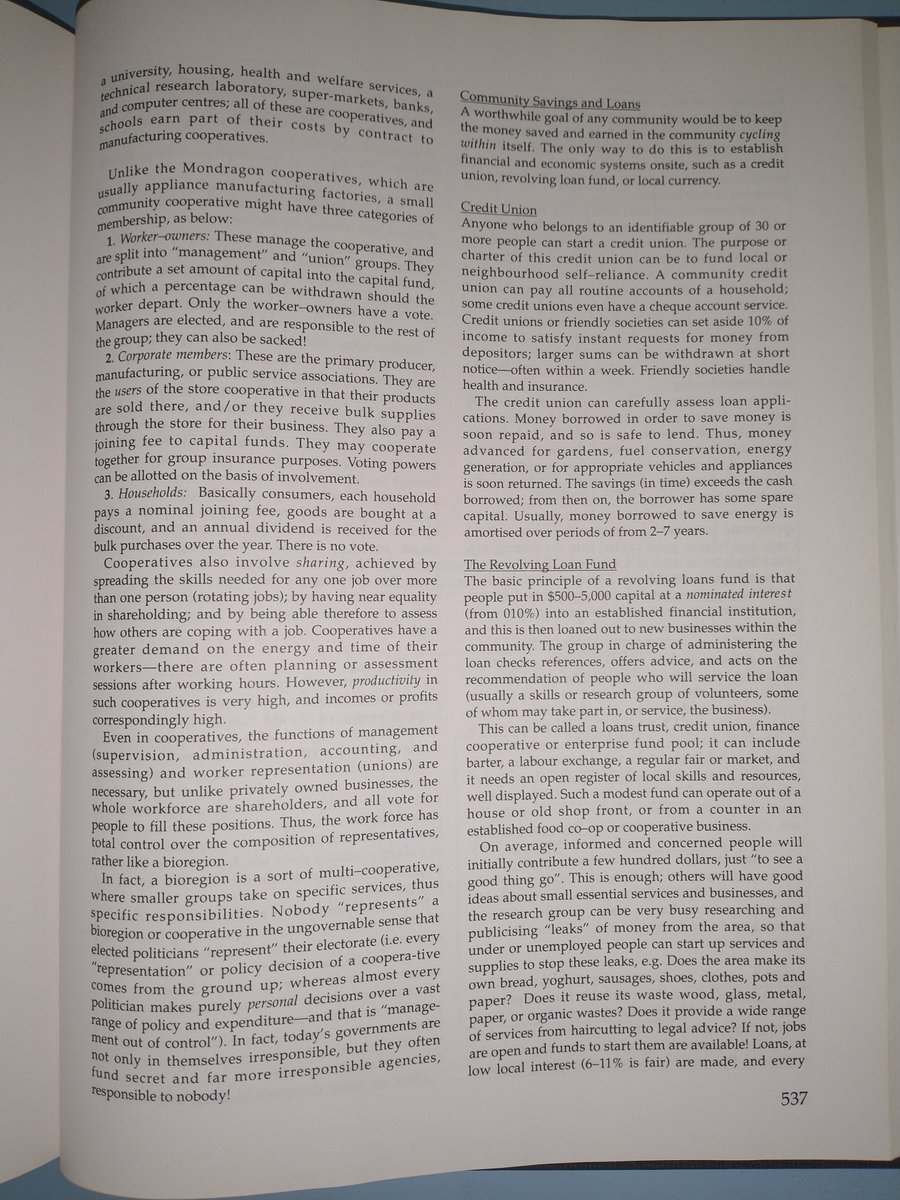Regeneration cannot happen in the colonial consumer corporate capture nation-state paradigm that has caused the degeneration. For real regeneration, we will need a new bioregional organization pattern embedded in planetary systems with real-time information feedback loops. 



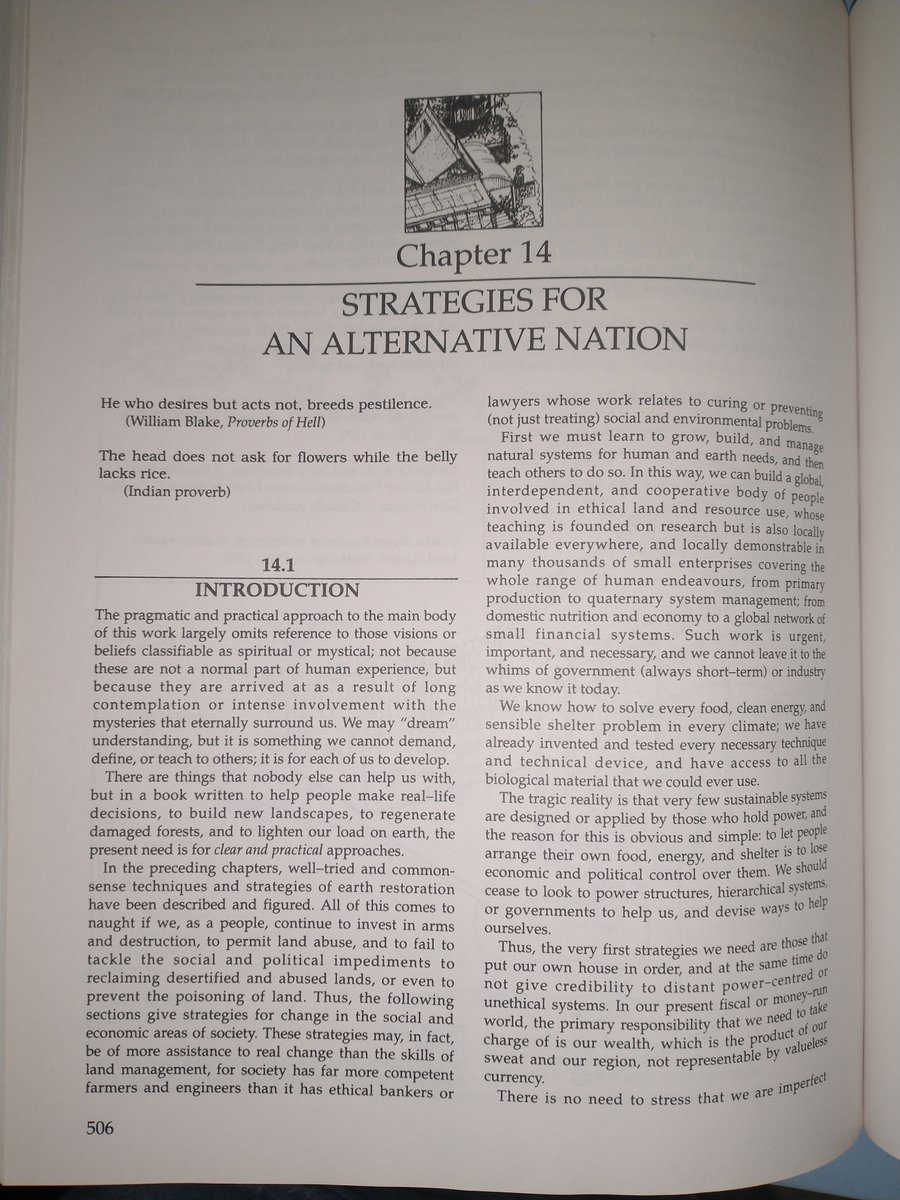



Luckily the processes are all here. We have the tools, and the timing. How do we plant seeds today so that when shit hits the fan we can have a support system in place? The Permaculture Designer's Manual is difficult to find in print and online so here's a taste of the conclusion 







This is a great summation by @DrDCWahl of what bioregional regeneration and resiliency means. cascadiabioregion.org/department-of-…
How do we accept both realities? How do we navigate from degen to regen? Making more mental and cultural space for the transition to step away from nationalism and into solidarity is our task today. Many people are already laying the foundation for generations. Let's speak it out
Bioregional blockchains are deployable with the inter-blockchain communication protocol aka IBC. A bioregion can run its own sovereign proof of stake network on inexpensive energy-efficient hardware enabling a full-stack fractal financial and governance platform for the planet.
I'll be sharing the rest of the chapter all 52 pages in this twitter thread. "Assembling a significant amount of common sense people in one area is a secret to success." An ecovillage network replacing bureaucracy with trusts, funds, and extended families. #permacommons 







This gets to one of my favorite parts of the chapter. How to form a trust to fund and form an Ecovillage. A DAO is an organization of trustees. In this case, land titles can be tokenized as NFTs, compiled in a portfolio and held in trust by the DAO. 



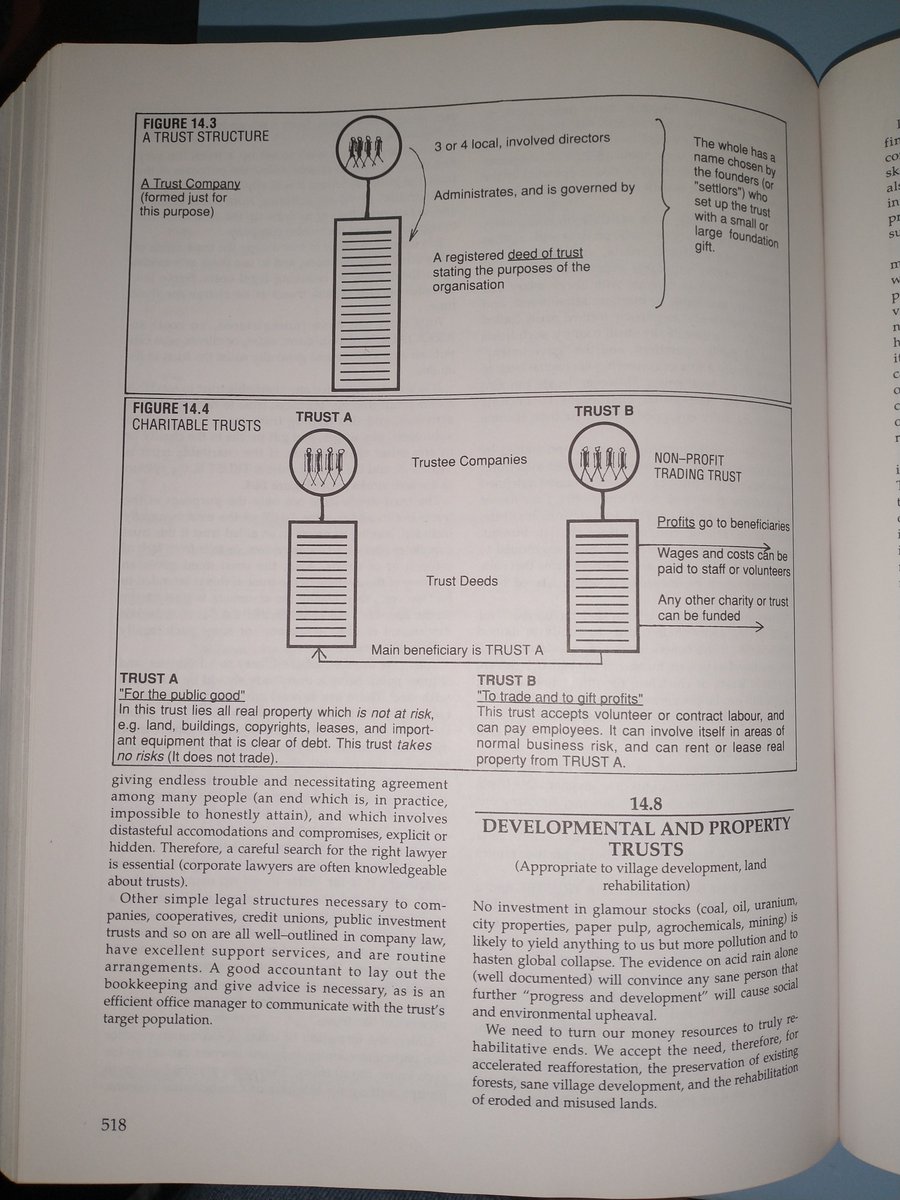
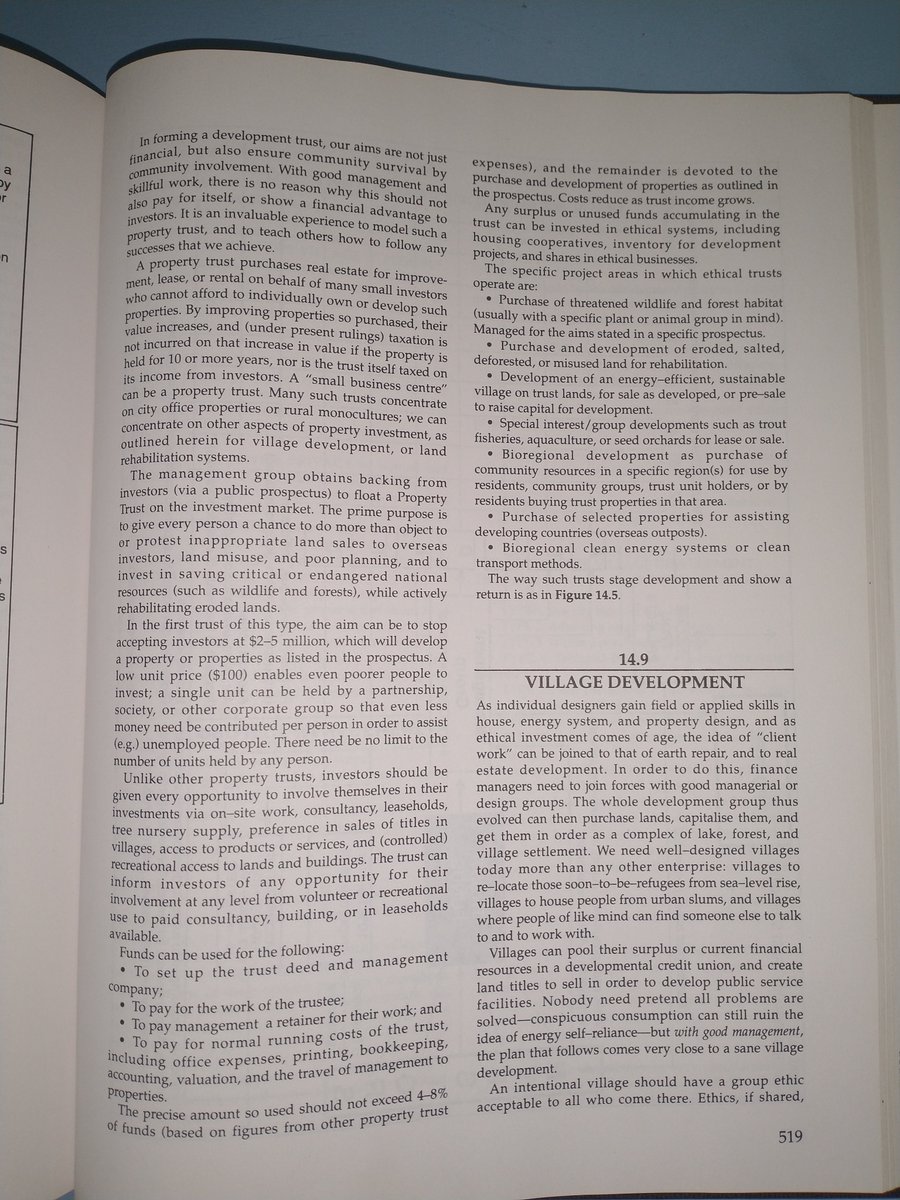


In our new DAO2DAO and subDAO, and app-specific blockchain DAO world, there's a lot we can do here. Use the land as collateral to mint a community currency as a type of Earthbank. The ecovillage can host regenerative enterprises such as pottery, culinary, textiles, tourism, etc.
An ecovillage trust can sell and gift shares. 30% of the initial sales pay for the entire site development. The other 30% can be gifted to permanent residents who also work the farm. Another 30% can be held for future use, and the remaining 10% is given to the development team.
People who have financial capital can subsidize those with more labor capital. Instead of a 30-year mortgage, imagine spending 5 years cultivating a food forest. As yields come in, residents fully vest in the trust. As the food system matures, yields grow aka regenerative finance
Ecovillage development strategies include reducing the need to earn, earning within the village, producing a surplus, providing non-material needs of the village, and cooperating in enterprises.
Of course, each village can design its own suitable combination of financing and development. In an inter bioregional blockchain world, these villages can trade surplus, issue community currencies, and run governance and administration both on and off-chain transparently.
As yields come into the commercial trust, a portion of the returns are reinvested in bringing more land under the trust creating a virtuous cycle and a pathway beyond destructive speculative real estate practices. Can you start to see the light at the end of the tunnel yet? 🕯️
Oh, so you're thinking of starting your own solar punk village with little to no experience in building a community? Well luckily here are the steps from A-Z including diagrams for a micro-economy and manufacturing base. 







The keys to success in an ecovillage? Being the right size so that everyone knows everyone else's name. It's also fascinating to look at the energy conversion diagrams of solar panels back in the 1980s!
The biggest change in mindset that an ecovillage represents is that life, work and recreation happen in the same place. How would your life be different if activities we integrated rather than separated?
Here's an interesting ecovillage project in Brazil for 15 hexagonal lots of homes made with superadobe and other natural building materials. phi.arq.br/portfolio-item…
Now that your ecovillage is up, how do you keep it running? Notice there's no mention of taxes but tithes. Plant a forest today and the timber sales will be sufficient to cover a lot of the costs. Finally, this is done in a closed-loop recycling system where nothing goes to waste 







Human coordination is essential which requires info symmetry in and outside the village for managing councils and accounts. How can DAOs and blockchains be useful to streamline and integrate the various councils and trusts into a composable and interoperable bioregional economy?
This brings up the question of what is appropriate technology? Single use or systems that are not easily repaired or complex to operate are not ideal en.m.wikipedia.org/wiki/Appropria…
For example, why aren't we mass deploying pelton wheels and using that for energy production? Better yet what would an internet connected cooperatively owned and operated hydro power utility look like?
And now we go deeper into human organization around regenerative enterprises with permaculture DAO operations from groups of 3 people all the way up to cities of 10 million people. 







With near zero marginal decentralized governance costs in DAOs, we have sensible legal, administrative and social mechanisms to allow people to cooperate. What is attractive is the fluidity of roles and occupations that people can have in village settings through "commonwork".
As we enter into the golden age of DAOs in the great year of 02022, how can we apply these new social, financial, and governance mechanisms to create effective working groups and right livelihoods?
A great example covered in the chapter is running a tool library through a DAO where capital risk is spread out, and costs are accounted for through the law of "Natural Return".
We are already seeing the emergence of the new DAO phenomena with groups like @tecmns self-organizing for commons management in a way that liberates the tool kit for others to build on. tecommons.org
We should develop or create wealth just like our landscapes by concentrating on conservation of energy and natural resources by developing procreative assets by reducing the creation of degenerative assets and by constantly divesting ourselves of any surplus wealth to those ends
With sound ethics and resource usage restrictions, any
financial institution can prevent leakage of wealth and
the erosion of basic resources, so that it is itself an asset to community, and builds wealth for re-investment.
financial institution can prevent leakage of wealth and
the erosion of basic resources, so that it is itself an asset to community, and builds wealth for re-investment.
A LETS has been known as a local exchange trading system, and in this case, interest-free green dollars are used.
What would a local ecovillage token trading through an inter-bioregional-communication network look like? 

What would a formal and informal economy look like in a regional setting owned and operated by the resident citizens? 







Making a local non-inflating currency backed by real objective resource. Currency should be used by the community for real needs. Producers of local goods accept local currency only which creates more demand.
If the currency reserves are living capital like trees, wealth is created over time.
Building out local production capacity to satisfy local demand while having a democratically managed fiscal system is a goal worth growing.
Already organizations are working to make local currencies scalable such as @Kolektivo @Cura_DAO and @grassEcon.
The benefit of using a @cosmossdk chain is that interoperability are built-in with "IBC" inter-bioregional blockchain communitcation for exchanging the local currency from one location to another.
Here we have Bill Mollison describing a worker cooperative that has unique labels for individual products. ERC 1155 standard allows for tokenization of individual products nested in a larger NFT collection. 







And here is where things get interesting. Transcending the relationship of ownership of land and entering into a more appropriate relationship of access and stewardship of land.
"Essential land for local food, fuel and structural
forestry, recreation, and conservation can be planned,
and secured under a set of public trusts by public
investment, gift, bequest, tax-deductible donation,
transfer from other authorities or trusts, or outright
purchase...
forestry, recreation, and conservation can be planned,
and secured under a set of public trusts by public
investment, gift, bequest, tax-deductible donation,
transfer from other authorities or trusts, or outright
purchase...
...Thus, the district secures its initial land
resource. Each and every parcel of land needs 3-4
involved, active, and interested trustees, and under a
legal limit, its plans and purposes should be set for the
long-term for 10-50 years ahead)."
resource. Each and every parcel of land needs 3-4
involved, active, and interested trustees, and under a
legal limit, its plans and purposes should be set for the
long-term for 10-50 years ahead)."
We start to see how a NFT representing the legal land trust could be set in ownership of a multi-sig wallet or even assembled in a portfolio of NFTs stewarded by a bigger DAO trustee board that oversees the development, use, and access of the land.
Using the distributed land trusts as a foundation, a formal and informal village economy can be supported by money legos running on a local blockchain spoke, connected to the larger bioregional data economy. 

👀 check out @gregory_landua presentation @ethdenver we can see how $REGEN acts as an LP for the local DEX. As regeneration occurs in the bioregion, eco credits can be verified and traded on-chain giving more legitimacy and liquidity to the local currency.
A new project has just launched to tokenize commons stewardship through $CAMP which represents different club membership and contributor options. How can we make it easier for titles to go into commons stewardship and integrate into earthbank functions? @cryptocommons @RegenCLT
Bill Mollison describes the ethical investment movement, the precursor to #RegenerativeFinance ..."to fund and support enterprises which:
- Assist conservation and reduce waste (not treat
waste and so grow to depend on more wastes!) or
energy use...



- Assist conservation and reduce waste (not treat
waste and so grow to depend on more wastes!) or
energy use...




- Grow clean food free of biocides or dangerous
levels of contaminants.
- Are involved in community reafforestation.
- Build energy-conserving houses or villages.
- Produce clean transport or energy systems.
- Assist people's self-reliance.
levels of contaminants.
- Are involved in community reafforestation.
- Build energy-conserving houses or villages.
- Produce clean transport or energy systems.
- Assist people's self-reliance.
- Found cooperatives, self-employed ventures, or
profit-sharing systems.
- Produce durable, sound, useful, and necessary
products.
Thus, local or bioregional funds can establish small or
large enterprises necessary to that region, using money
raised by residents."
profit-sharing systems.
- Produce durable, sound, useful, and necessary
products.
Thus, local or bioregional funds can establish small or
large enterprises necessary to that region, using money
raised by residents."
A #permacommons bioregional blockchain operated by and for the community creates economies conducive to life.
I had the pleasure to do a rainwater harvesting workshop weekend intensive with Brock Dohlman in 2018 at the Occidental Ecology and Arts center which is an inspiration to visit. This way of living can be the new normal.
When we work together to conserve and practice care for the people, the planet, and future generations there are no resource wars for power.
The flow of time and energy into cultivating a more beautiful world will require a bodily, mental, and spiritual energy shift into interbeing. How can we widen the gate to allow for more people to pass with a private key? 
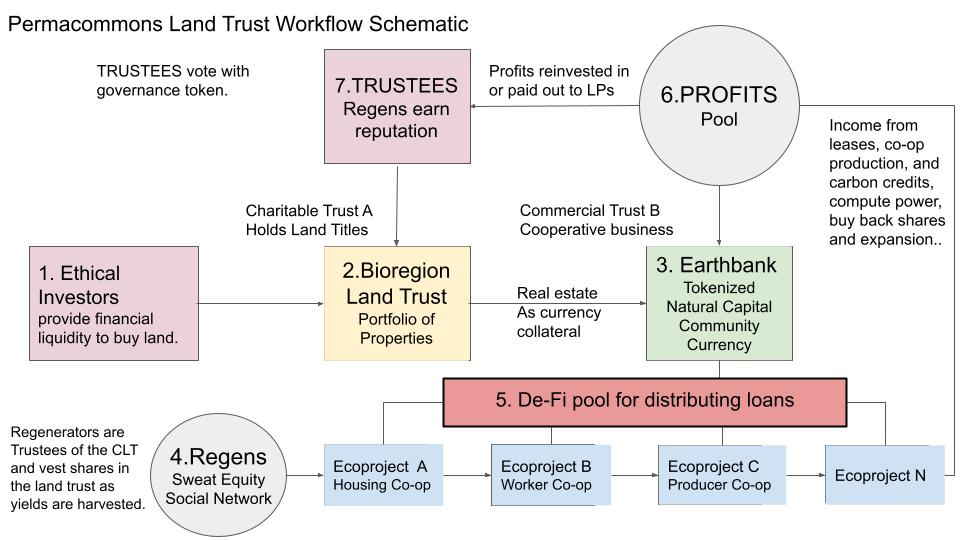
One way to bootstrap a decentralized autonomous bioregion would be through a PFP fundraise campaign. It may look something like this where keystone plant and animal species are featured on each regional flag.
https://twitter.com/goodnatureart/status/1505926491590168576h/t @CascadiaDept
Liquidity from the flag sale is used to fund the initial earth bank and form the bioregional validator set. The PFP could also be used as a type of passport or Self Sovereign Identity cheqd.io/blog/why-self-… @cheqd_io
In part inspired by the #ReFi orb and @ReFiDAOist
• • •
Missing some Tweet in this thread? You can try to
force a refresh



